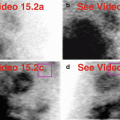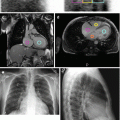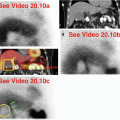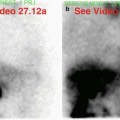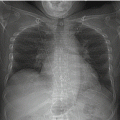and Vincent L. Sorrell2
(1)
Division of Nuclear Medicine and Molecular Imaging Department of Radiology, University of Kentucky, Lexington, Kentucky, USA
(2)
Division of Cardiovascular Medicine Department of Internal Medicine Gill Heart Institute, University of Kentucky, Lexington, Kentucky, USA
Electronic supplementary material
The online version of this chapter (doi: 10.1007/978-3-319-25436-4_17) contains supplementary material, which is available to authorized users.
As in Chap. 7, “cold” imaging findings related to the abdominal wall occur much more commonly than do “hot” findings. Table 17.1 lists these potential sources of “hot” and “cold” findings on SPECT MPI. Technical- or patient-related “hot” artifacts are caused by contamination that occurs during or after radiopharmaceutical administration or from excreted urinary activity (Fig. 17.1) (Burrell and MacDonald 2006).

Table 17.1
Differential diagnosis of “hot” and “cold” imaging findings related to the abdominal wall
Organ system | “Hot” finding | “Cold” finding | References |
|---|---|---|---|
Abdominal Wall | Contamination (radiopharmaceutical, urine) | Internal metal objects (implanted devices) External metal objects (jewelry, coin, key, belt buckle) Arms by sides and superimposed on abdominal wall (positioning) Cracked crystal Malfunctioning photomultiplier tube | Burrell and MacDonald (2006) Chamarthy and Travin (2010) Hendel et al. (1999) |

Fig. 17.1




“Hot” radiopharmaceutical or radioactive urine droplet. There is a discrete, intense, round, “hot” focus that lies outside the right lower abdominal wall. Likely culprits include contamination on a sheet/blanket covering the patient during imaging or on her clothing/skin. Note to reader: this is the same cinematic image shown in Fig. 6.2—did you notice this incidental finding when reviewing that case? Stress raw projection images (Video 17.1a, frame 1), 99mTc sestamibi
Stay updated, free articles. Join our Telegram channel

Full access? Get Clinical Tree




